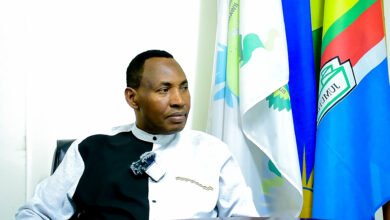Rwanda 30 years later : health mutuals, an example for Africa
Alternative community financing methods based on prepayment and risk pooling, such as health mutuals initiated in Rwanda since 1999, have enabled this country to improve healthcare delivery for its entire population.

By Aimable Twahirwa
The Health Mutual, introduced in 1999, is a solidarity health insurance system in which individuals (families) come together and pay contributions to access medical services and healthcare. It was created to help low-income individuals access medical care at an affordable cost. Currently, several health insurance programs in Rwanda target specific groups of the population. However, the most significant in terms of membership is the mutual system, where participation is organized on a household basis, with an annual payment of 3000 Rwandan francs (2.3 US$) per family member.
Estimates from the Rwandan Social Security Board (RSSB), a government body responsible for coordinating mutuals in Rwanda, show that membership in this insurance system covers 51% of the entire Rwandan population, estimated at 13.5 million inhabitants. The rest of the population benefits from health insurance from other providers of the same service, both in the public and private sectors.
Since the genocide against the Tutsis in 1994, Rwandan authorities have mobilized communities in managing and creating a healthcare financing system. One of the means to achieve this was the establishment of health insurance mutuals, known in Rwanda as health mutuals. According to Déogratias Ntigurirwa, responsible for mobilization within the Central Service of Mutuals in Rwanda, almost all hospitals and clinics in the country currently accept members of this health insurance system.
Mobilizing multiple sources of funding

For example, at the Masaka Health Center located on the outskirts of Kigali, only 200 patients are admitted daily, of which 10 do not have health insurance. At the neighboring referral hospital, out of 6,000 patients admitted each month, 2,000 are hospitalized, 95% of whom are members of the Health Mutual. In addition to public funds and other sources of funding mobilized to support health mutuals, there are also subsidies received from employees in the public and private sectors, telecommunications companies, health insurance funds, etc.
According to the Ministry of Health, 91% of Rwandans are members of multiple health insurance systems, which has led to a significant increase in the number of deliveries assisted by qualified healthcare personnel, currently estimated at 94% across the Rwandan population. Thanks to this strong adherence to health mutuals, a large part of the population has access to appropriate healthcare. Life expectancy in Rwanda is 67 years, while the fertility rate for women is 4.1 children, but the goal is to reach 2.3 children by 2050.
Maternal mortality is 203/100,000, with a target of less than 20/100,000 deaths by 2050. The number of deaths of children under 5, estimated so far at 33/1,000, has never been lower according to the latest official estimates, which aim to reduce this figure to 18/1,000 by 2050, with a 33% target by 2050. According to official statistics, 94% of mothers give birth with the assistance of a doctor, and 64% have access to contraception.
Most governments in Africa could draw inspiration from this Rwandan model
« Most governments in Africa could draw inspiration from this Rwandan model and apply it in their respective countries, » comments Dr. Laurent Musango, a senior official at the World Health Organization.
Financial accessibility to healthcare and equity, while ensuring equitable access to quality services for the population, lies at the heart of Rwanda’s reconstruction policy. Since the genocide of 1994, health mutuals have become one of the options for the country, not only enabling the population to receive timely healthcare when needed but also serving as a strategy to fight poverty.







